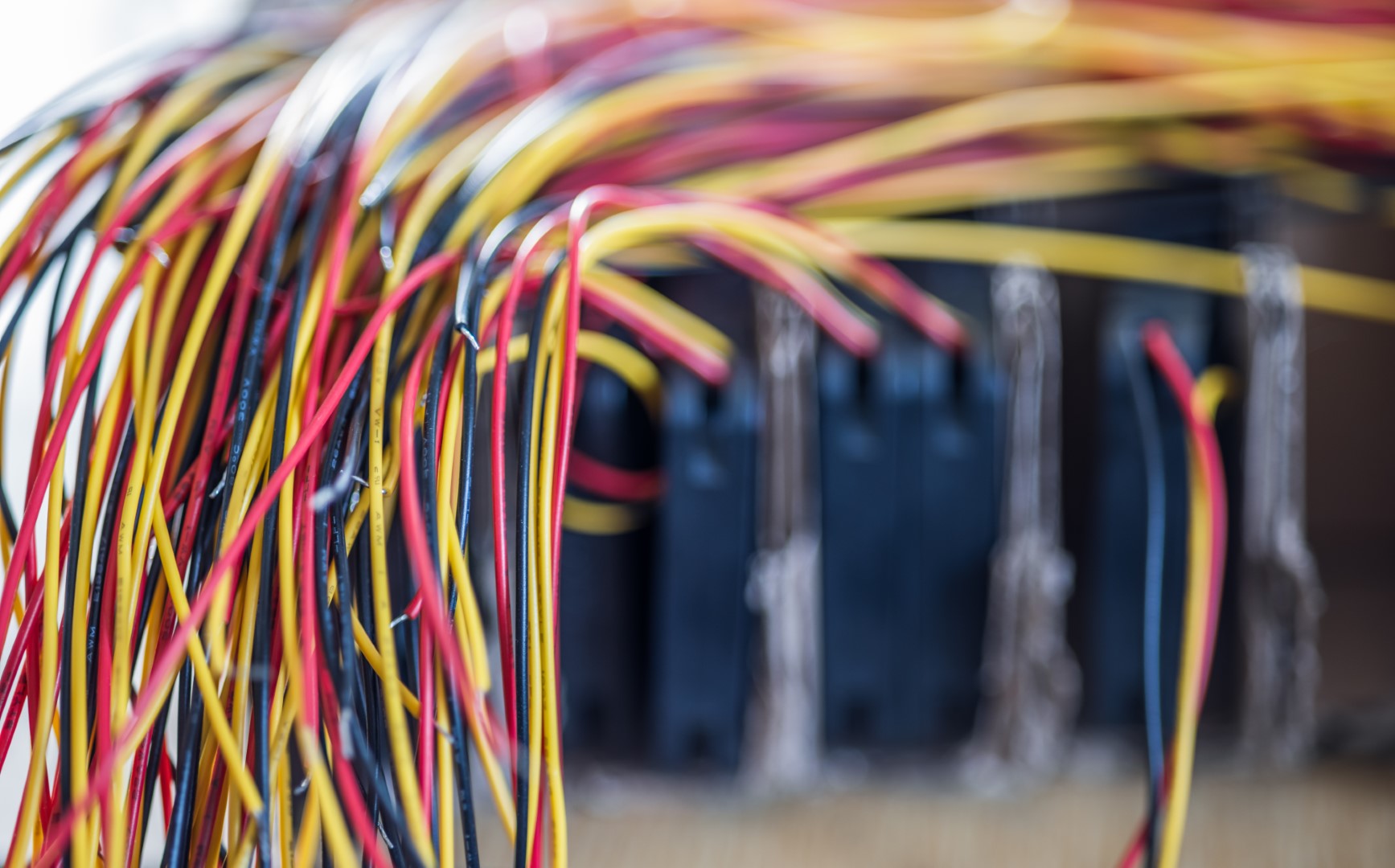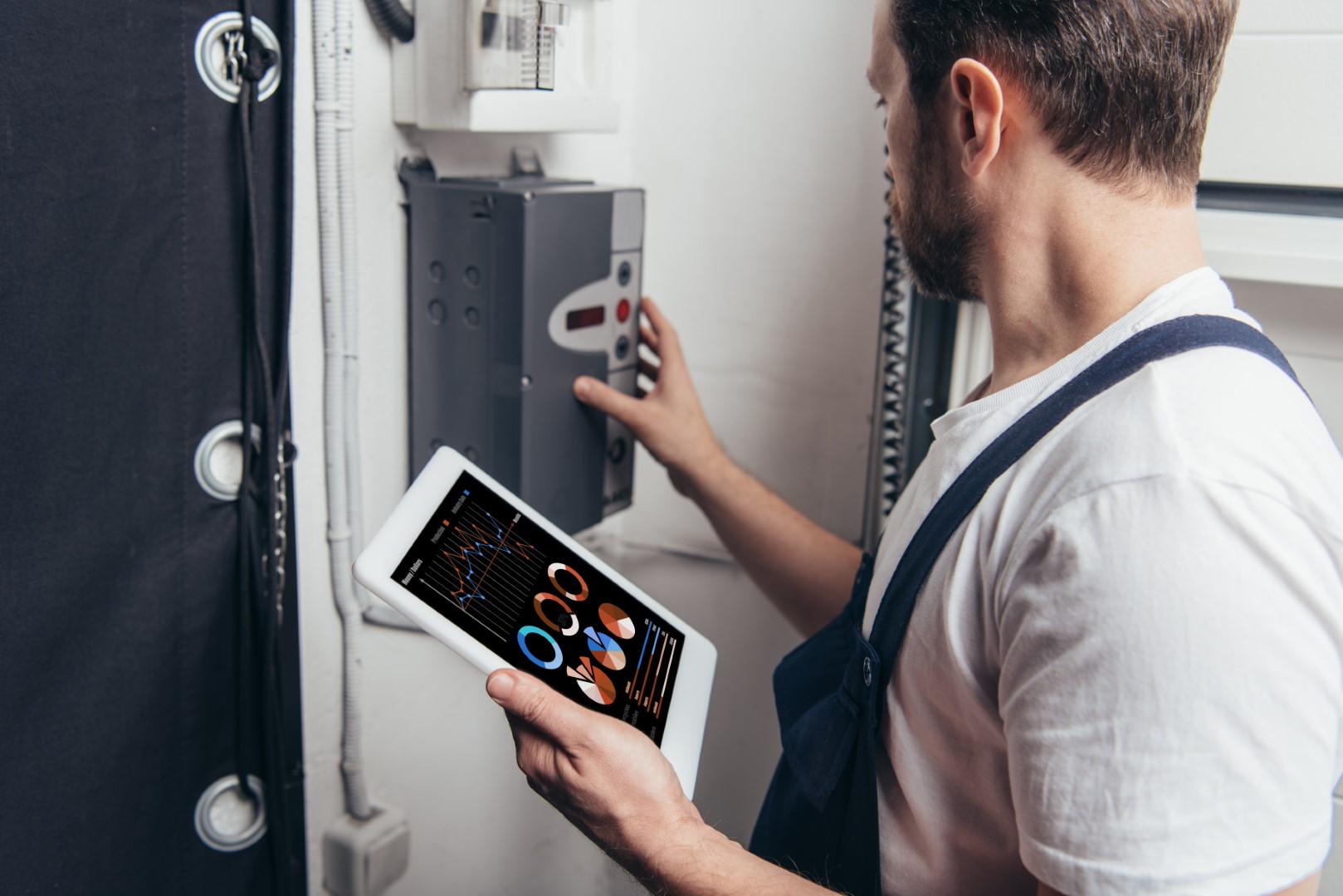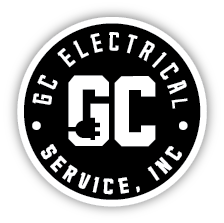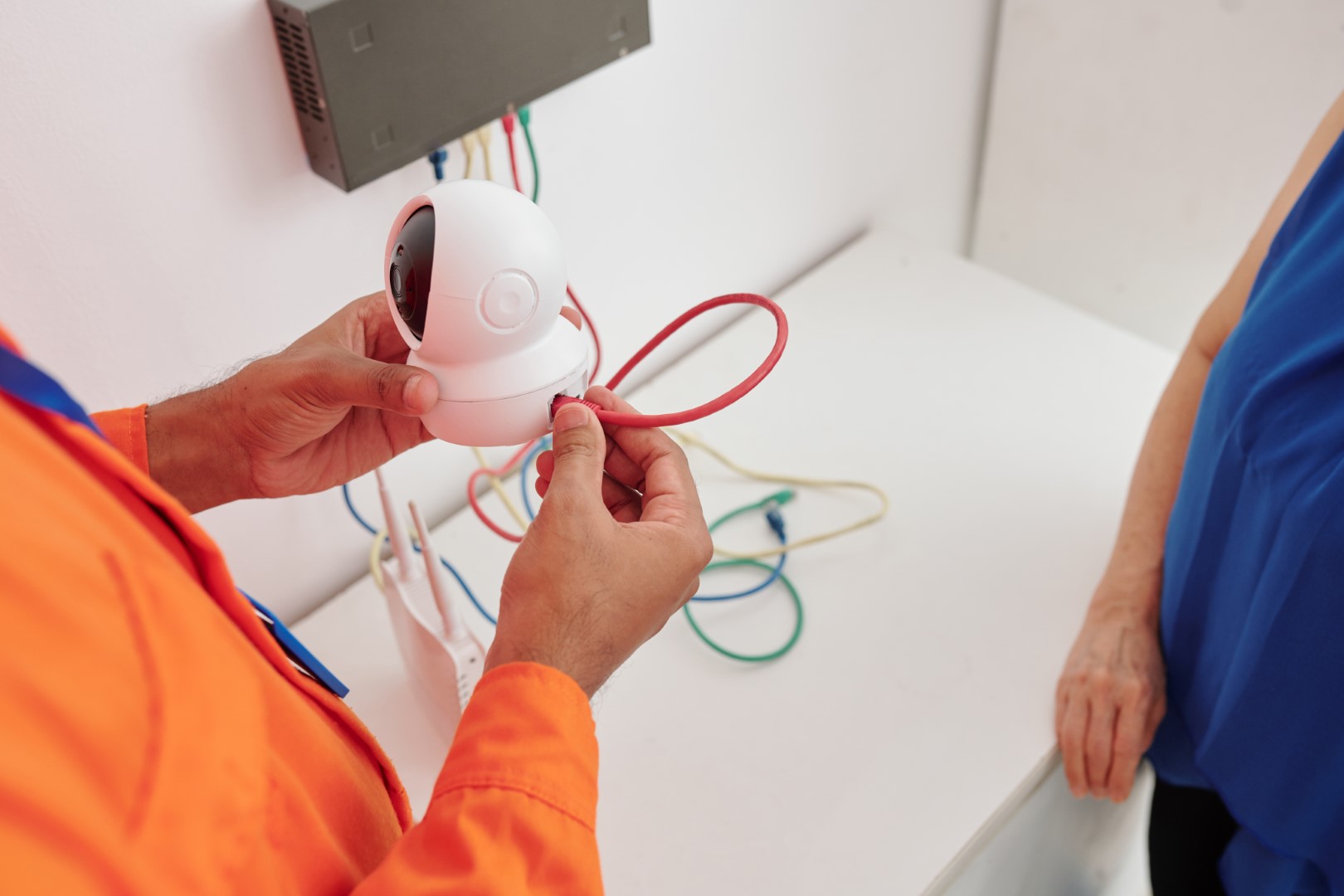Low voltage wiring is critical in modern commercial buildings, offering various applications that enhance functionality, efficiency, and safety. From powering security systems to supporting advanced communication networks, low voltage wiring is an essential component in the infrastructure of any commercial facility. In this blog, we'll explore some of the most common applications of low voltage wiring in commercial buildings, highlighting its importance and how it contributes to a well-functioning work environment.
Security Systems
One of the most vital applications of low voltage wiring in commercial buildings is the installation of security systems. These systems often include CCTV cameras, access control systems, and alarm systems, all of which rely on low voltage wiring to operate effectively.
CCTV Cameras
Closed-circuit television (CCTV) cameras are a staple in commercial security. They provide real-time monitoring and recording, helping businesses protect their premises from unauthorized access and criminal activities. Low voltage wiring connects the cameras to a central control system, ensuring they receive the necessary power and can transmit data effectively.
Access Control Systems
Access control systems, such as keycard readers and biometric scanners, are crucial for regulating who can enter specific areas within a building. These systems rely on low voltage wiring to communicate with the central security hub, ensuring only authorized personnel can access restricted areas.
Alarm Systems
Alarms are essential to any security system, alerting personnel to potential threats or breaches. Low voltage wiring connects the various sensors and detectors within the building to the central alarm system, allowing for quick and accurate detection of issues.
Communication Networks
In today's digital age, reliable communication networks are the backbone of any commercial operation. Low voltage wiring is integral to setting up and maintaining these networks, which include:
Telephone Systems
Traditional VoIP telephone systems rely on low voltage wiring to connect different parts of a building. These systems ensure clear communication between employees, departments, and external contacts.
Internet and Data Networks
The infrastructure for Internet and data networks within commercial buildings primarily uses low voltage wiring. Ethernet cables, fiber optics, and coaxial cables are examples of low voltage wiring that transmit data across the building, supporting everything from email communications to video conferencing.
Intercom Systems
Intercom systems facilitate communication between different areas of a building. They are often used in larger facilities like hospitals, schools, and corporate offices for quick and easy communication. Low voltage wiring ensures these systems are always operational, providing reliable communication in various scenarios.
Lighting Systems
Lighting is a fundamental requirement in any commercial building, and low voltage wiring plays a significant role in modern lighting systems. These systems include:
LED Lighting
LED lighting has become increasingly popular in commercial buildings due to its energy efficiency and long lifespan. Low voltage wiring powers these lights, allowing for the installation of advanced lighting systems that can be easily controlled and monitored.
Emergency Lighting
Emergency lighting is essential for guiding occupants to safety during power outages or emergencies. Low voltage wiring ensures these lights remain operational even when the main power supply is disrupted, providing a reliable illumination source in critical situations.
Smart Lighting
Smart lighting systems, which can be controlled remotely via a smartphone or centralized control panel, also rely on low voltage wiring. These systems offer flexibility and energy savings by allowing businesses to adjust lighting based on occupancy, time of day, or specific needs.
Audio and Visual Systems
Audio and visual systems are widely used in commercial settings for presentations, meetings, and public announcements. Low voltage wiring is crucial for the operation of these systems, which include:
Public Address Systems
Public address (PA) systems announce events across large areas, such as retail stores, airports, or office complexes. Low voltage wiring connects the microphones, speakers, and amplifiers, ensuring clear and reliable communication throughout the building.
Conference Room Equipment
In modern commercial buildings, conference rooms have advanced audiovisual systems, including projectors, microphones, and video conferencing equipment. These systems operate on low voltage wiring, enabling seamless presentations and virtual meetings.
Digital Signage
Digital signage is commonly used in commercial buildings for advertising, information dissemination, and wayfinding. These systems, which include screens and control units, are powered by low voltage wiring, ensuring continuous operation and easy updates.
Building Automation Systems
Building automation systems (BAS) are becoming increasingly prevalent in commercial buildings, allowing for centralized control of various building systems. Low voltage wiring is integral to these systems, which include:
HVAC Control
Heating, ventilation, and air conditioning (HVAC) systems are critical for maintaining a comfortable indoor environment. Low voltage wiring connects the various components of these systems, allowing for centralized control and automation. This wiring includes adjusting temperatures, controlling airflow, and monitoring system performance.
Energy Management Systems
Energy management systems monitor and control energy usage within a building. Low voltage wiring enables integrating various energy-consuming systems, such as lighting and HVAC, into a single control platform. This integration allows for real-time energy usage monitoring and optimization, leading to significant cost savings.
Access and Security Management
Low voltage wiring allows for the integration of access control, security, and surveillance systems into a single platform. This integration allows for centralized monitoring and control, enhancing security and operational efficiency.

Fire Alarm and Detection Systems
Safety is a top priority in any commercial building, and fire alarm and detection systems are crucial to building safety protocols. Low voltage wiring is essential for the installation and operation of these systems, which include:
Smoke Detectors
Smoke detectors are the first line of defense against fires in commercial buildings. They are connected via low voltage wiring to a central alarm system, ensuring immediate detection and response to potential fire hazards.
Fire Alarms
Fire alarms alert occupants to evacuate the building in case of a fire. Low voltage wiring connects the alarm devices, such as horns and strobe lights, to the central fire alarm system, ensuring rapid communication and response during emergencies.
Sprinkler Systems
In many commercial buildings, sprinkler systems are integrated with fire detection systems. Low voltage wiring ensures that the sprinkler system is activated when a fire is detected, helping to control the fire and prevent it from spreading.
Access Control and Monitoring
Access control and monitoring systems are essential for managing entry and exit points in commercial buildings. Low voltage wiring is used extensively in these systems, which include:
Door Access Systems
Door access systems, such as card readers, biometric scanners, and keypads, control entry to restricted areas. Low voltage wiring connects these devices to a central control unit, ensuring secure and efficient access management.
Surveillance Cameras
Surveillance cameras are vital for monitoring activities in and around commercial buildings. Low voltage wiring powers these cameras and transmits video feeds to a central monitoring station, enabling real-time surveillance and recording.
Intrusion Detection Systems
Intrusion detection systems use sensors to detect unauthorized entry into a building. These sensors are connected via low voltage wiring to a central alarm system, which triggers alerts and notifies security personnel of potential breaches.
Data Centers and Server Rooms
Data centers and server rooms are the nerve centers of many commercial buildings, housing critical IT infrastructure. Low voltage wiring is crucial for the operation of these facilities, including:
Network Cabling
Network cabling, including Ethernet and fiber optic cables, connects servers, switches, and other IT equipment. Low voltage wiring ensures reliable data transmission and network connectivity within the data center.
Power Distribution
Low voltage wiring distributes power to various IT equipment within the data center. This power distribution includes uninterruptible power supplies (UPS), which provide backup power in an outage and ensure the continuous operation of critical systems.
Environmental Monitoring
Data centers require precise environmental control to prevent overheating and equipment failure. Low voltage wiring connects temperature sensors, humidity sensors, and cooling systems to a central monitoring platform, ensuring optimal conditions are maintained.
Telecommunications Infrastructure
Telecommunications infrastructure supports voice, data, and video communications within commercial buildings. Low voltage wiring is used in various aspects of this infrastructure, including:
Telephone Lines
Traditional telephone lines use low voltage wiring to connect different parts of a building. This line wiring ensures reliable voice communication between employees and external contacts.
Internet Connectivity
Internet connectivity within commercial buildings is supported by low voltage wiring, including Ethernet and coaxial cables. These cables enable high-speed data transmission, supporting various online activities and cloud-based services.
Satellite and Cable TV
Low voltage wiring connects receivers and distribution systems in commercial buildings that require satellite or cable television services. This wiring ensures reliable signal transmission for entertainment and informational purposes.

Lighting Control Systems
Lighting control systems are used in commercial buildings to manage lighting based on occupancy, time of day, or specific needs. Low voltage wiring is essential for the operation of these systems, including:
Occupancy Sensors
Occupancy sensors detect the presence of people in a room and adjust lighting accordingly. Low voltage wiring connects these sensors to the central control system, ensuring efficient lighting use and energy savings.
Dimming Systems
Dimming systems allow for the adjustment of light levels based on user preferences or specific requirements. Low voltage wiring connects dimmers to the central control system, enabling smooth and precise control of lighting levels.
Daylight Harvesting
Daylight harvesting systems adjust artificial lighting based on natural light availability. Low voltage wiring connects sensors that measure natural light levels to the central control system, optimizing lighting for energy efficiency and occupant comfort.
The Importance of Low Voltage Wiring in Commercial Buildings
Low voltage wiring is more than just a means to power essential systems—it's the backbone of modern commercial infrastructure. From ensuring the safety of a building with advanced security systems to enabling seamless communication through reliable networks, low voltage wiring is integral to creating efficient, safe, and functional workspaces. Its versatility allows for integrating innovative technologies such as smart lighting, building automation, and energy management systems, making it a cornerstone of any commercial building's design and operation. By understanding and implementing these low voltage wiring applications, businesses can enhance operational efficiency, ensure safety, and prepare facilities for future technological advancements.
For in-depth insights into low voltage wiring and how it can benefit your commercial building, visit our GC Electrical Service Inc. blog. Our blog contains expert advice, industry trends, and practical tips to help you optimize your facility's electrical system.


